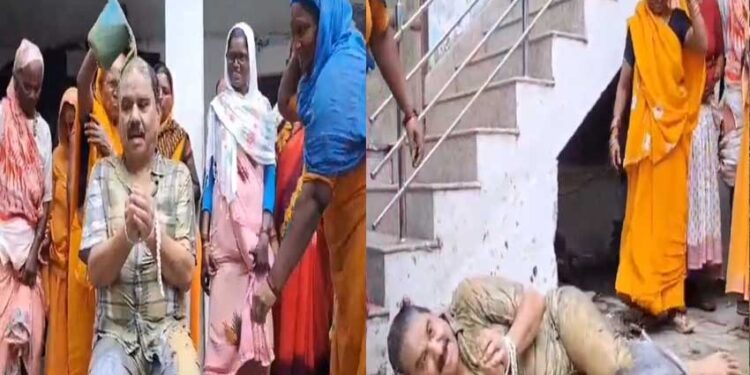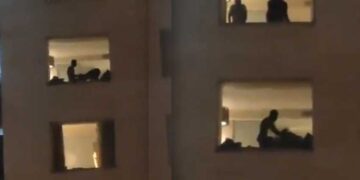Delhi Air Pollution: The pollution level in the capital Delhi has reached the red mark of danger. According to the Central Pollution Control Board, Delhi’s average air quality index crossed 300 on Monday. This level is kept in very poor category.
The pollution level in the capital Delhi has reached the red danger mark. According to the Central Pollution Control Board, Delhi’s average air quality index crossed 300 on Monday. This level is kept in very poor category. It is displayed in red color under the color coding prescribed by CPCB. Pollution in Delhi has reached this level after almost four months.
People of Delhi have been breathing polluted air since Dussehra, but on Monday the level of pollution became more lethal. According to air quality standards, the index from 201 to 300 is kept in the poor category, while the index from 301 to 400 is kept in the very poor category. Very poor category days started in Delhi on Monday. According to CPCB, the average air quality index stood at 310. The index of most areas of the capital is above 300.
If we look at the CPCB data, earlier on June 19 the air quality index had reached 306. That means this was the level of pollution in the air before the arrival of monsoon. This is the first day of the winter season when the air quality has reached the red mark. A day earlier on Sunday, the average index of Delhi was at 277. That means there has been an increase of 33 points within 24 hours.
More than double the pollutants in the air
According to the standards set by CPCB, air is considered healthy only when the PM 10 level is below 100 and the PM 2.5 level is below 60. The level of PM 10 in the air of Delhi-NCR at 3 pm on Monday was 232 micrograms per cubic meter and the level of PM 2.5 was 122 micrograms per cubic meter. This means that Delhi’s air contains about 1.25 times more pollution than the standards.
No effect of restrictions on firecrackers is visible
In view of the pollution situation in the capital Delhi, there is a ban on buying, selling, storing, using etc. of firecrackers. Despite this, firecrackers are being used continuously.
The air here was the worst
Anand Vihar 359
RKpuram 349
Shadipur 349
Wazirpur 348
three factors of weather
1. After the withdrawal of monsoon, due to slowing down of wind speed, pollutant particles remain in the atmosphere for a longer time.
2. Pollutants freeze in cold
3. The smoke of stubble comes due to the wind direction being north-west.
What will be the strictness in the second phase of GRP?
transportation
● Parking rates will be increased to limit the number of private vehicles on the roads
● Improvement in public transport. Increase in the number and frequency of CNG-electric buses and metro
● Cleaning of roads and sprinkling of water. Daily mechanical-vacuum sweeping and water sprinkling on marked roads.
● Adequate personnel should be deployed at major intersections and traffic jam sites for smooth operation of traffic.
● Water sprinkling in hotspot areas, heavy traffic areas etc.
construction site
● There should be strict monitoring of construction and demolition sites. Strict monitoring of dust control measures should be ensured
● Focus on hotspot areas. Special campaign at hot spot locations across NCR
● Ban on diesel generated sets. Generators running on natural gas, bio gas, LPG will be able to run. Only retrofitting generators with capacity more than 800 kilowatts will be able to operate. Essential services will be exempted from this
● Uninterrupted power supply should be ensured by preventing the use of generators or other electrical sources.
awareness campaign
● All media should be used to inform and make people aware about pollution
● Heaters will be provided to security personnel by RWAs, so that they can avoid burning biomass or solid waste to survive winters
Citizen Charter issued
● People should reduce the use of their vehicles and use public transport.
● Even if a little longer, a less crowded route should be chosen
● Always change the air filter in your vehicle at regular intervals.










